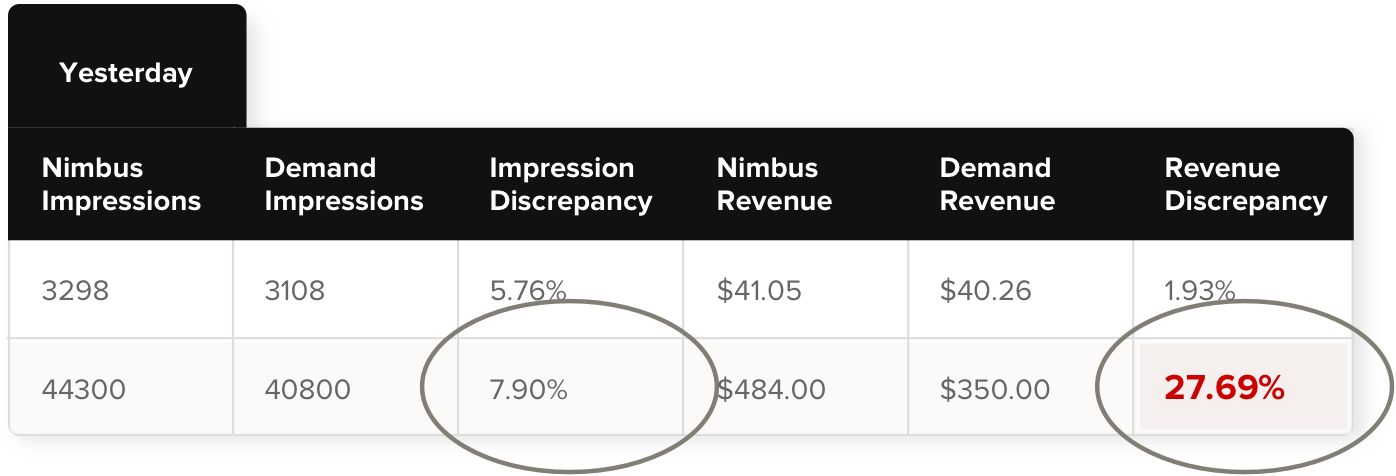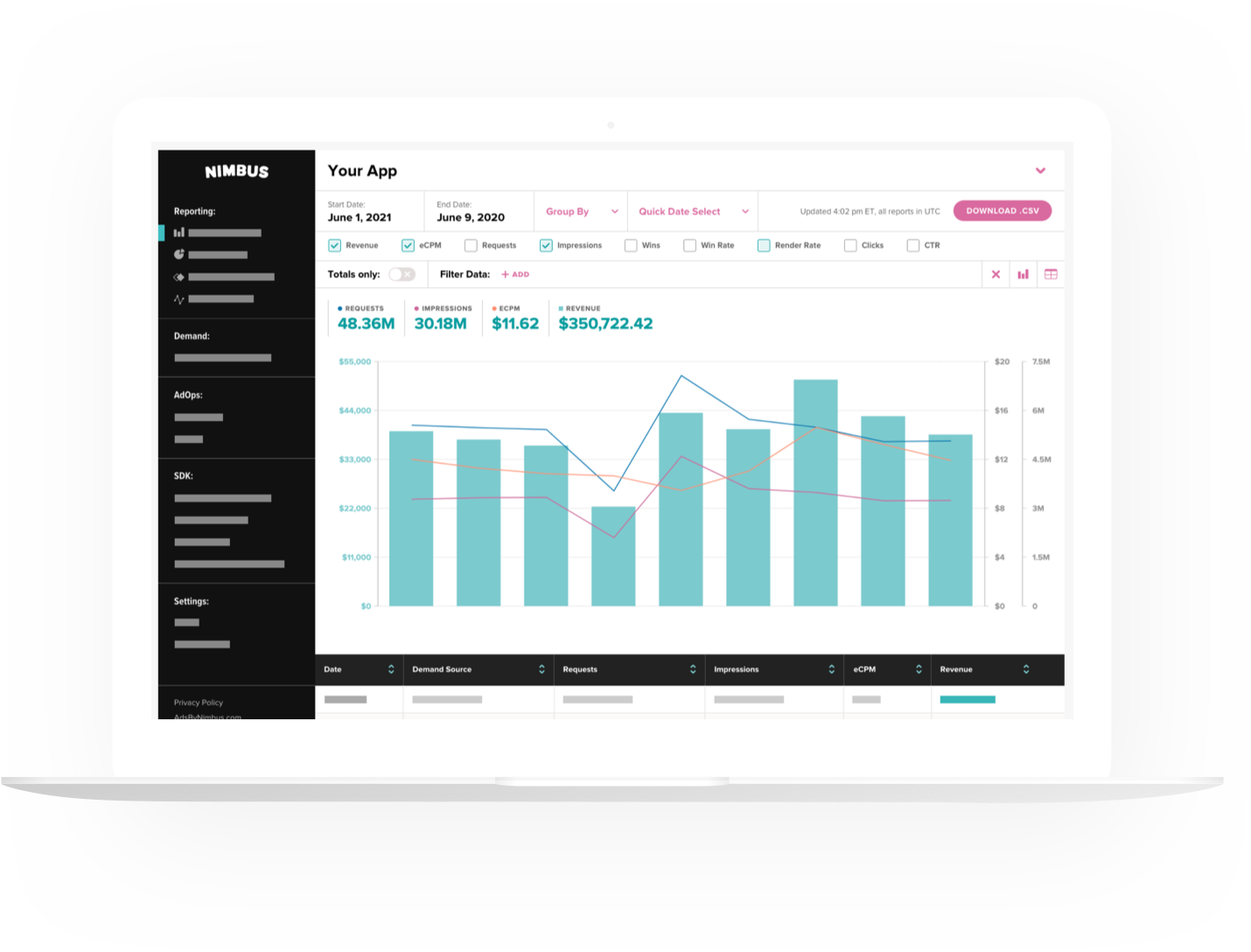Impression Discrepancy
Guidelines
Nimbus Ensures You Collect Every Dollar You’ve Earned
An ad impression discrepancy is when the number of impressions reported by the ad exchange (Nimbus) is different than the number reported by the demand partner (SSP/DSP).
It is important for a publisher to conduct regular ad impression discrepancy reports. If the numbers are not aligned between the publisher and demand partner, you could be missing out on additional revenue for impressions not being counted.
An ad impression discrepancy is calculated by taking both the impression and revenue number from the demand partner, comparing it to the ad exchange (Nimbus), and finding the difference.
The industry standard considers any difference below 10% acceptable. Anything higher than 10% should be looked into.
What do I do if I see a discrepancy higher than 10%?
In the example here, there is a revenue discrepancy of 27.69%. However, if you look at the impression discrepancy, there is a discrepancy of 7.90%. You can disregard this discrepancy because of the amount of scale that’s present. The volume of the impressions is so low that this will naturally result in a high discrepancy. If it is an impression discrepancy, the same logic will follow.

If you’ve eliminated the possibility that volume is an issue, you will then need to conduct an impression discrepancy for that demand partner by creative and device type (Android static vs. Android VAST, iOS static vs iOS VAST) to pinpoint exactly where the discrepancy is coming from. In the example here, you can clearly see the impression discrepancy is occurring for Android static.

Once you’ve isolated the offender, you’ll want to run a report every day until you can identify which day the discrepancy began. After you’ve found the creative type, the device, and the date the discrepancies began, immediately reach out to the offending demand source and work with them to remedy the solution.
When to immediately address discrepancies.
If discrepancies are relatively high (i.e.: ~30%+), it is recommended you pause that demand partner until the issue is resolved and inform them of when you first noticed the issue and how long it’s been happening. If a demand partner requests you “turn on” their demand so they can test and debug, it is highly advised that you set an impression cap that you feel is sufficient for testing. This is up to your discretion. This way you can help the demand resolve the issue without a significant revenue loss.
This is a great question. As you conduct weekly discrepancy reports, you’ll start to know what is considered “normal” behavior for a demand partner vs. “abnormal” behavior. For example, if a demand partner is typically on the higher end of the discrepancy 9%-11% and then jump to 12%-13% the next week, you know this is generally typical. It may remedy itself by the following week, but you should pay close attention to it. If a demand partner is normally 5%-7% but then increases to 15%, you would know this is considered an “abnormal” behavior and should be looked into immediately.
Don’t forget to “true up.”
Since Nimbus reports in real-time, the numbers on any given day will change every minute and won’t match with what the demand partners are reporting, since they don’t report in real time. This also means that Nimbus numbers don’t need time to “true up”. However, demand partners at times will need their data to align as their buyers update their reporting. It is wise to wait a few days to see if demand and ad exchange numbers line up. It typically takes demand 3 days for data to “true up” unless otherwise noted. If you’re seeing discrepancies for a longer period of time, reach out to the offending demand partner.

